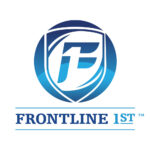Salesforce CPQ (Configure, Price, Quote) and Revenue Cloud Advanced serve similar yet distinct purposes. CPQ is a powerful tool designed to streamline the quoting and pricing process, ensuring accurate and efficient sales operations. It allows businesses to configure complex products, apply pricing rules, and generate professional proposals with minimal manual effort.
Revenue Cloud Advanced, on the other hand, extends the capabilities of CPQ by incorporating more advanced revenue management features, such as contract lifecycle management, automated revenue recognition, and AI-driven insights. It is built to support more sophisticated monetization strategies, including subscription-based and consumption-based pricing models, providing a more comprehensive lead-to-cash solution.
Key Product-Level Differences
1. Bundling Logic
- CPQ: Uses a rules-based bundle configuration approach with Product Rules (Selection, Validation, Alert, and Filter rules). Bundles can become complex to manage due to dependency on manual rule creation.
- Revenue Cloud Advanced: Supports more declarative, metadata-driven bundling logic. Advanced Bundles allow dynamic inclusion of components based on customer segments, pricing tiers, and usage thresholds. It offers more flexibility with less need for custom rules.
2. Object Model
- CPQ: Relies heavily on the Quote Line Editor with objects like Quote, Quote Line, Product Option, and Price Rule. Customization is often required to bridge gaps between CPQ and other systems.
- Revenue Cloud Advanced: Introduces a more normalized and extensible object model with clear separation of Order, Invoice, Subscription, Usage, and Revenue records. This object model is designed to better align with financial systems and support automation.
3. Pricing Engine
- CPQ: Uses a static pricing model with Price Books and Price Rules, requiring custom development for advanced pricing strategies.
- Revenue Cloud Advanced: Offers dynamic pricing capabilities, including real-time pricing adjustments based on usage, tiers, discounts, and currency conversions. It also supports pricing catalogs with version control and audit trails.
4. Contract and Subscription Management
- CPQ: Contract generation is supported but limited in its automation and flexibility for mid-term amendments.
- Revenue Cloud Advanced: Built-in contract lifecycle management, including support for contract amendments, renewals, and automated prorations, making it ideal for recurring revenue businesses.
Why Migrate to Revenue Cloud Advanced?
Organizations might consider migrating from Salesforce CPQ to Revenue Cloud Advanced for several reasons:
- Enhanced Revenue Management: Advanced tools for managing billing, invoicing, and revenue recognition help organizations streamline financial processes.
- Subscription and Usage-Based Pricing: Companies transitioning to recurring revenue models benefit from built-in support for flexible pricing structures.
- AI-Powered Insights: Revenue Cloud Advanced leverages AI to optimize pricing strategies and forecast revenue trends.
- Reduced Customization Effort: While CPQ often requires significant customization, Revenue Cloud Advanced provides more out-of-the-box capabilities to handle complex revenue scenarios.
- Seamless Integration with Financial Systems: Better alignment with enterprise resource planning (ERP) and financial systems reduces manual reconciliation efforts.
Steps for a Successful Migration
Migrating from Salesforce CPQ to Revenue Cloud Advanced requires careful planning and execution. Below are the key steps involved:
1. Assess Current CPQ Implementation
- Review existing configurations, pricing rules, approval workflows, and integrations.
- Identify any customizations that need to be mapped to Revenue Cloud Advanced.
2. Define Business Requirements
- Align stakeholders to determine new revenue models and features to be leveraged.
- Document any gaps between the current CPQ setup and the desired Revenue Cloud Advanced configuration.
3. Data Migration Strategy
- Cleanse and prepare data for migration, including customer records, product catalogs, and pricing structures.
- Use Salesforce tools like Data Loader or third-party ETL (Extract, Transform, Load) solutions to migrate historical data.
- Data Mapping Best Practices: Establish a detailed mapping document between CPQ objects (Quotes, Quote Lines, Price Rules) and Revenue Cloud Advanced entities (Products, Subscriptions, Orders). Validate this mapping with business and technical stakeholders to ensure data integrity.
4. Configure Revenue Cloud Advanced
- Set up new pricing models, contract structures, and automation workflows.
- Configure AI-based recommendations and analytics for revenue optimization.
5. Integration with Existing Systems
- Ensure seamless connectivity with CRM, ERP, and financial platforms.
- Test integrations to confirm accurate data flow and reporting.
6. User Training and Adoption
- Provide comprehensive training sessions to sales, finance, and operations teams.
- Develop documentation and support materials to assist with the transition.
- Change Management: Proactively manage change with communication plans, executive sponsorship, and feedback loops. Include key end users early in the testing phase to build confidence and ensure alignment.
7. Testing and Validation
- Conduct thorough user acceptance testing (UAT) to verify pricing accuracy, quote generation, and billing processes.
- Perform parallel runs to compare results between CPQ and Revenue Cloud Advanced.
- Pilot a Subset of Products: Consider running Revenue Cloud Advanced in a sandbox for a selected group of products while keeping CPQ live. This allows comparison of outputs, refinement of pricing logic, and staged learning without disrupting live operations.
- Performance Monitoring: Define performance benchmarks (e.g., quote processing time, invoice generation time) and monitor them during UAT and post go-live. Use Salesforce logging and monitoring tools to identify bottlenecks.
8. Go-Live and Post-Migration Support
- Execute a phased rollout to minimize disruptions.
- Monitor system performance and address any post-migration issues.
- Maintain both CPQ and Revenue Cloud Advanced environments temporarily to ensure continuity during the cutover period.
Conclusion
Migrating from Salesforce CPQ to Revenue Cloud Advanced can provide organizations with enhanced capabilities for managing complex revenue processes. With careful planning, structured migration steps, and stakeholder buy-in, businesses can unlock the full potential of Revenue Cloud Advanced to drive efficiency, optimize pricing, and improve financial reporting. If your organization is considering this transition, now is the time to evaluate the benefits and take the necessary steps toward a successful migration.
At Frontline 1st, we are deeply committed to making your transition to Revenue Cloud Advanced as smooth and successful as possible. Our team brings years of hands-on consulting experience and cross-industry expertise, equipping us with the insights and skills needed to guide clients through complex transformations. Our successful clients in Finance, High-tech and Professional Services are a testament to our expertise.
We understand that platforms like CPQ and Revenue Cloud Advanced require more than technical implementation—they demand strategic analysis and a deep understanding of business processes. With our proven approach that balances technical execution with business acumen, we help organizations maximize the return on investment from these sophisticated tools. Whether you’re modernizing your revenue operations or shifting to new pricing models, Frontline 1st is here to be your trusted partner every step of the way.











